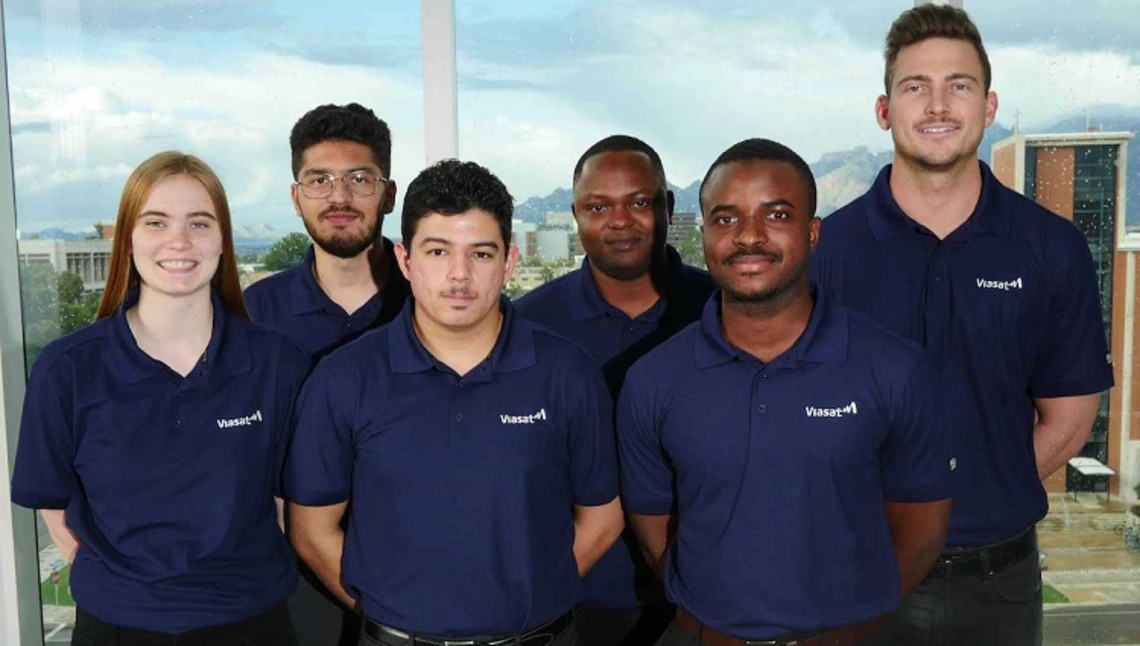Viasat and Engineering Students Design a Solar-Powered Hot Spot

For their senior capstone project, one group of University of Arizona engineering students worked with communications company Viasat to create a solar-powered Wi-Fi hot spot to give internet access to people living off-the-grid. Viasat and the UA have worked together on a senior design project for several years.
According to Viasat, the engineers who oversee the project play the role of the customer, providing specs, objectives and all other necessary details. The students do most of the work, with engineers offering feedback as needed. The UA students selected to work on the project even decided which power source to use, ultimately choosing solar because it’s an abundant resource in Arizona. They started their work at the beginning of the 2019-2020 academic year.
“I majored in engineering because I really want to help make change in the world for the good, and I thought engineering would be the best way to do that,” said mechanical engineering student Rachel Greenland in an interview with Inside Viasat. “What drew me to this project was that it showed the most potential for helping other people. It was also really complex, and a lot more involved than a lot of the other senior design projects.”
Although the hot spot could still undergo some changes, the prototype is relatively small, and can be configured to fit in a cargo truck bed for easy transportation and installation.
“The off-grid Community Internet Terminal is a powerful concept, and the students did a great job of making the product standalone, ruggedized, portable and highly efficient – something that can withstand an outdoor environment while providing a wide area network of high-speed internet to a community in need,” said Sarah Shepis, a Viasat materials engineer and UA alumna who led the project. “They had incredible passion for this project, and the quality of their deliverables was above and beyond.”
